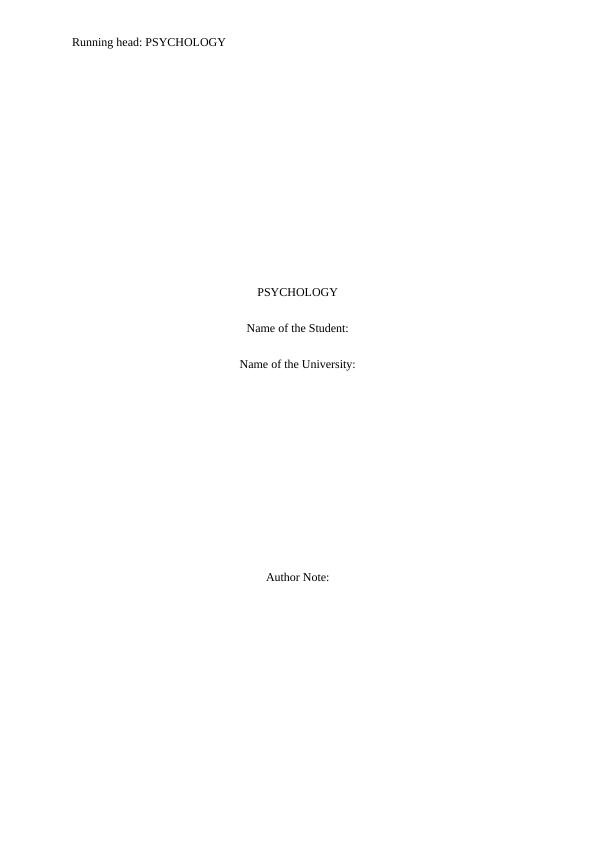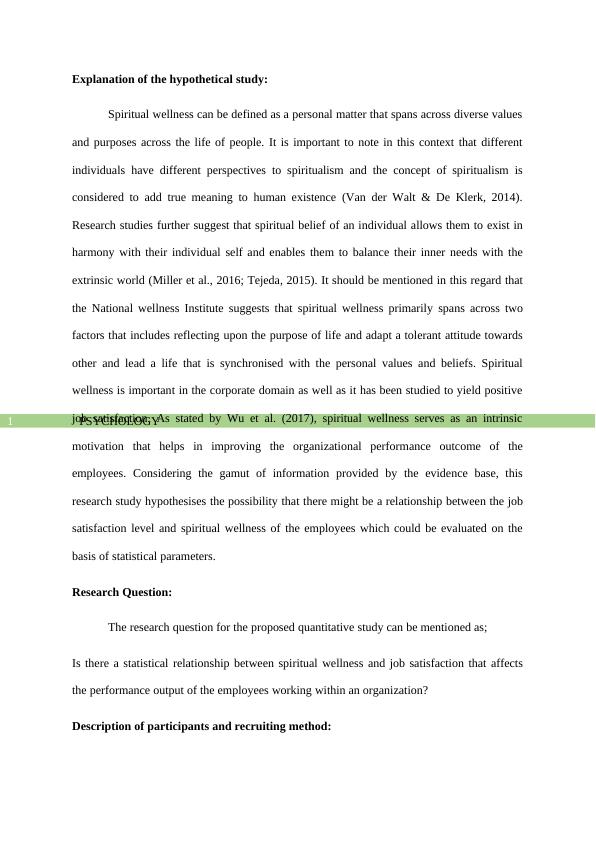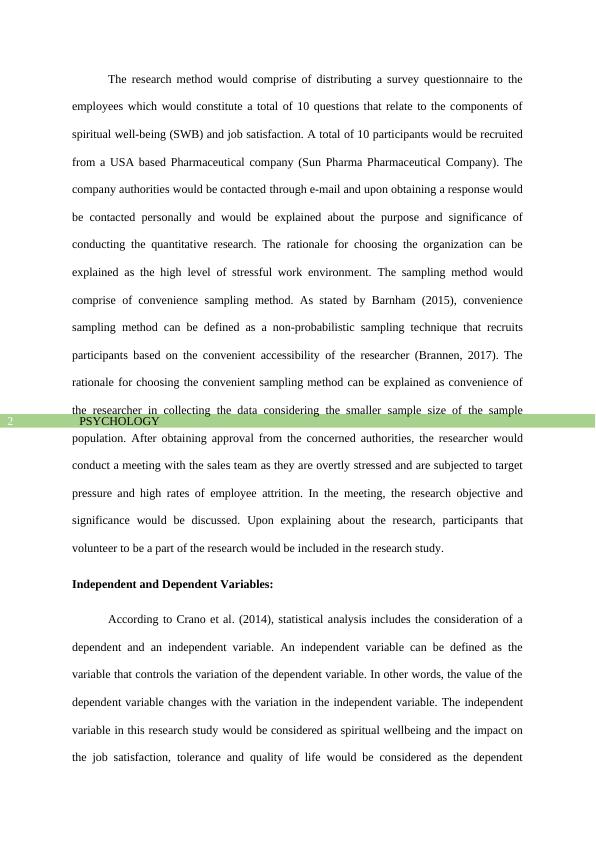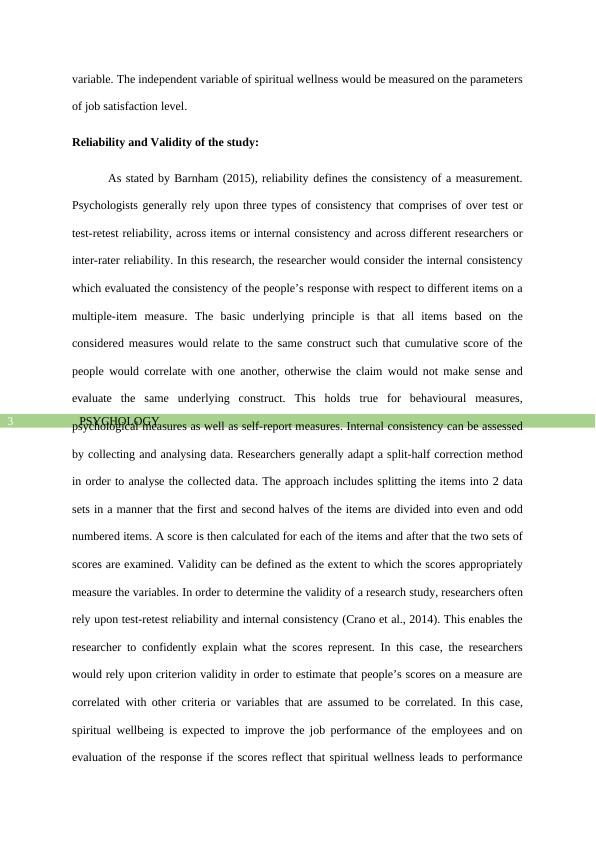Relationship between Spiritual Wellness and Job Satisfaction
The final assignment aims to propose two hypothetical studies and apply the learning from the course on research designs.
15 Pages3483 Words4 Views
Added on 2022-12-30
About This Document
This document explores the correlation between spiritual wellness and job satisfaction and its impact on employee performance. It presents a hypothetical study that investigates the relationship between these variables through quantitative and qualitative research methods. The study aims to determine if there is a statistical relationship between spiritual wellness and job satisfaction that affects employee performance.
Relationship between Spiritual Wellness and Job Satisfaction
The final assignment aims to propose two hypothetical studies and apply the learning from the course on research designs.
Added on 2022-12-30
ShareRelated Documents
End of preview
Want to access all the pages? Upload your documents or become a member.
Impact of Training and Development on Employee Performance in Woolworths
|10
|1494
|20
Psychological Wellbeing of Nursing Students during COVID-19 Pandemic: A Research Proposal
|16
|4352
|477
Predicting Factors of Depression and Anxiety in Mental Health Nurses
|27
|5656
|154
Exploring Staff Perspectives on End-of-Life Care in Residential Aged Care Homes: A Qualitative and Quantitative Study
|8
|2508
|55
Research Proposal Methodology Assesment
|12
|3013
|34
Research and Statistical Method: Sample Size, Sampling Method, Reliability, Control Variables, and Research Design
|5
|753
|221




